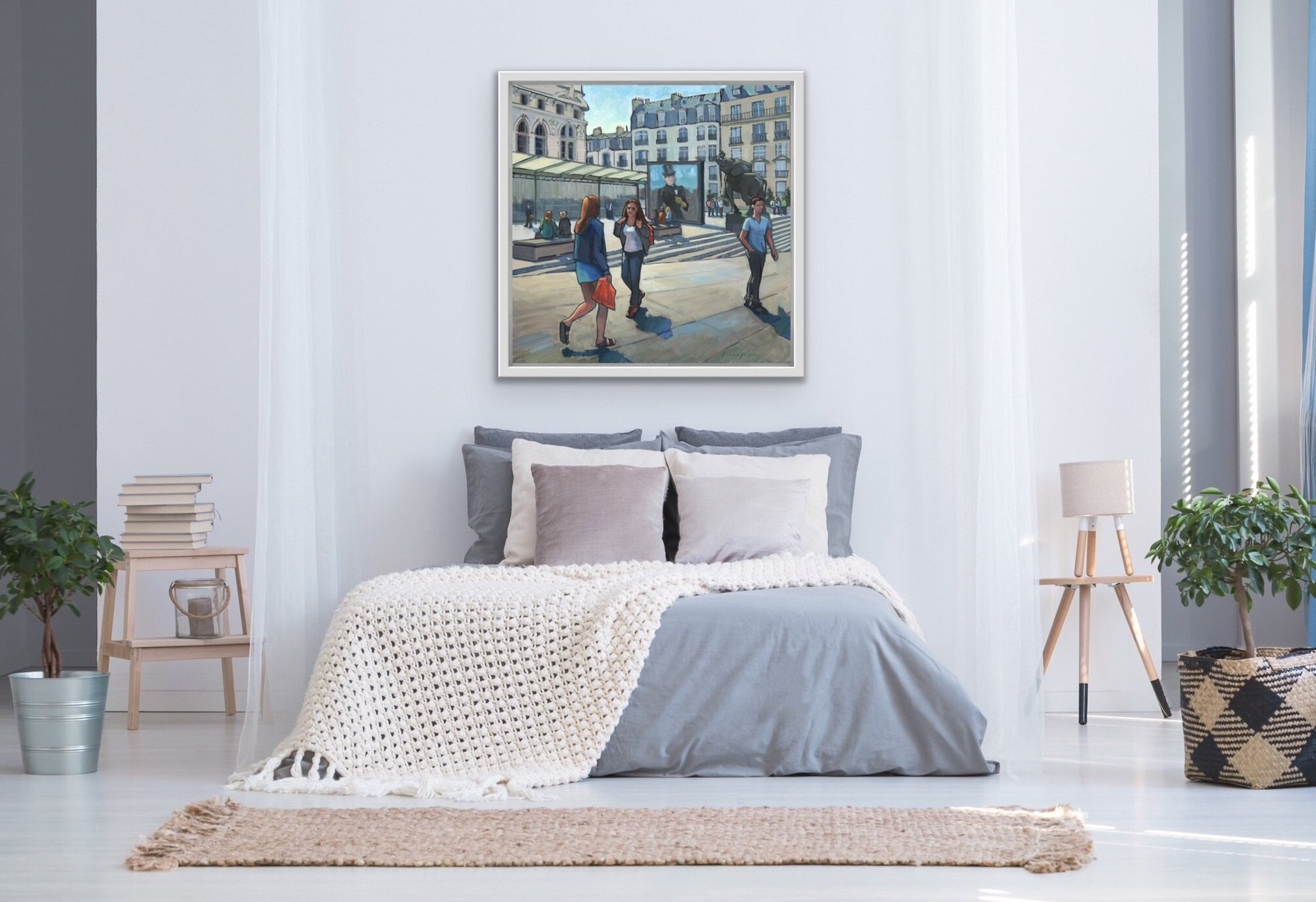5 Tips for Decorating with Artwork
The right artwork can beautifully finish a room, be a stunning centerpiece for your design, and transport you to new places. But what is the right art work? Where do you start?
Buy artwork that you love
It may seem obvious, but the only real reason for buying art is because you love it. Everything else is secondary. Whether you buy it on impulse at a gallery or an art festival, or if you research artists and styles and approach it systematically, when it gets down to the buying decision a gut check is your most important tool. Do you love it? Does it make you feel good to look at it? Will you be happy to living with it for years to come?
If the answers to these questions are yes, you are well on your way. There are other considerations, but this is by far the most important one.
2. Art doesn’t have to match the sofa.
You might think it’s essential to choose artwork to match the room style or the sofa color, but that’s really secondary. As long as the painting is the right scale and the colors and styles don’t actually clash with your decor it will work. Your new painting could add a pop of energy or a wave of restfulness to a room that needs something more. And you can always purchase pillows or other accessories that pull in a bit more of the colors from the painting.
Think about style first. You can bring a contemporary painting into your traditional room to bring freshness and energy. Or you could make an eclectic combination, like my contemporary scene of Paris teamed with the Victorian sofa above, for a powerful room focal point.
Next think about color. What are the main colors in the room and in your prospective painting?
Are they in the same color family? Then it’s an easy yes.
Is your room neutral? This is another easy yes because rooms that are mostly neutral can be pared with almost any artwork.
Are the room and the painting complementary colors? (This guide by Canva explains complementary colors.) This combination could be a great way to add punch to your space. This technique works best in design if one of the colors is bright and the other toned down a bit.
3. Scale is key to decorating with art
The size and proportion of the painting should always work with the adjacent furniture and the room as a whole. Large furniture needs a large artwork. The large scale painting above looks great over the queen size bed, but it would overpower a small desk or table.
Medium and small scale pieces look best on smaller walls, like a kitchen, office, or bathroom. For a guide to displaying small work, check out my blog post on displaying small art.
The best way to determine if the scale is right is to stand as far back as possible and squint at the the space, so you’re just seeing the masses, not the details. Then you can see if the artwork scale balances the furniture.
4. Group artwork for more impact
If the painting you love isn’t big enough for the space you have, you could use my favorite way to display medium and small artwork; hang them in groups or pairs. This actually works for all size artwork and can create a powerful feature. Look at the art you already own – even small pieces – and consider how they can work together.
The varying frames on the grouping above in a dining area emphasizes their uniqueness and adds interest. Conversely, framing a group of artwork the same way, like below, makes a strong unified statement.
5. Print or original?
I understand the temptation to buy a print of a painting you love. After all they are a fraction of the cost of the original. But …
I am a strong advocate of buying only original art. (For more on this, read my blog post Buying Original Art vs. Prints) In paintings, the brushwork, energy, and luminosity of a painting can only be fully appreciated when you are standing in front of the original. Sure prints can “look” like the original, but in actuality there is always a considerable sacrifice in color authenticity and surface quality. I want my buyers to have the full experience of my artwork, so I only sell original work.
But what if you can’t afford original art? First, check out artists’ websites to see if they have smaller original work that is more affordable. Most do. Mine are here.
Or you can add a few high quality prints from museum stores and other upscale sources. By the time you are ready for your next major art purchase, the prints will have faded and it will be time to replace them with original art.
I hope this guide was helpful. Now it’s your turn. How do you design your home with artwork? How do you feel about the print vs. original debate? I’d love to hear!





